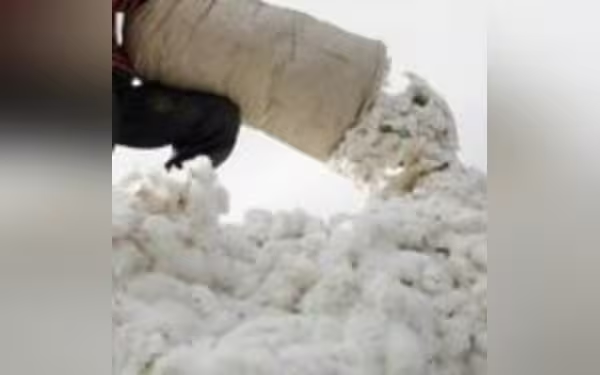Saturday, November 16, 2024 08:58 PM
Pakistan Emerges As Largest Buyer Of US Cotton
- Pakistan imports 1.192 million bales of US cotton.
- Local cotton production declines due to unfavorable weather.
- 18% sales tax on domestic cotton drives millers to imports.
 Image Credits: pakistantoday
Image Credits: pakistantodayPakistan becomes the largest buyer of US cotton due to local production decline and high sales tax on domestic cotton.
In a significant shift in the global cotton market, Pakistan has become the largest buyer of American cotton. This development marks a notable change, as it is the first time Pakistan has taken the lead in purchasing US cotton. The primary reasons behind this surge in imports are the tax-free status of these imports and a considerable decline in local cotton production, which has been worsened by unfavorable weather conditions.
According to a recent report from the US Department of Agriculture, Pakistan imported approximately 1.192 million bales of US cotton, each weighing 160 kg. This figure surpasses imports from other countries such as Vietnam, Turkiye, and China. Furthermore, estimates indicate that contracts for an additional 3.0 to 3.5 million bales have already been signed with the US, Brazil, and other nations. As a result, total imports are projected to reach around 5.5 million bales this year, a move aimed at fulfilling the domestic textile industry's requirements.
Ehsanul Haq, the chairman of the Cotton Ginners Forum, has pointed out that the increase in imports can be largely attributed to the 18% sales tax imposed on domestic cotton. This tax has led many millers to seek out tax-exempt imported lint instead. Additionally, yarn imports have also been exempted from taxes, which has resulted in lower prices for local cotton. This situation has raised concerns among domestic growers, who are struggling to compete with the influx of cheaper imported materials.
Moreover, it has been reported that Indian yarn is making its way into the Pakistani market through Dubai, further complicating the challenges faced by local cotton producers. This reliance on imports underscores the difficulties confronting Pakistan’s agricultural sector, which is currently dealing with declining yields and quality issues, largely due to changing weather patterns.
As Pakistan navigates this complex landscape, it is essential to consider the long-term implications of such heavy reliance on imported cotton. While the immediate needs of the textile industry may be met, the sustainability of local cotton production must be prioritized. Addressing the challenges posed by climate change and improving agricultural practices could help revive the local cotton sector, ensuring that it remains competitive in the global market. Ultimately, a balanced approach that supports both local farmers and the textile industry will be crucial for Pakistan's economic stability and growth.













